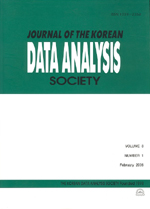임원배상책임보험과 부채의 가치
Directors and Officers Liability Insurance and the Value of Corporate Debt
- 한국자료분석학회
- Journal of The Korean Data Analysis Society (JKDAS)
- Vol.18 No.4
-
2016.082011 - 2021 (11 pages)
- 7

본 연구는 임원배상책임보험이 경영진의 위험 투자를 자극하여 부채가치 감소를 유발하는지를 검증하였다. 임원배상책임보험은 이해관계자의 소송으로부터 경영진을 보호하여 경영진의 공격적 투자를 용이하게 한다. 때문에 임원배상책임보험을 가입한 기업의 경우, 위험이전의 유인이 자극되어 위험이 큰 투자를 감행하게 되고 그 결과 부채의 가치는 감소할 수 있다. 본 연구는 기업의 위험이전 유인이 극대화하는 상황을 구분하고, 임원배상책임보험이 투자로 인한 부채가치 감소와 기업가치의 변동성 증가에 기여하는 지를 검증하였다. 임원배상책임보험에 대한 정보의 공개가 의무 시 되었던 2000년부터 2008년까지의 국내 상장기업 자료를 이용하여 검증한 결과, 평균적으로는 임원배상책임보험이 투자로 인한 부채가치 감소의 횡단면적 차이에 설명력을 가지지 않았다. 하지만 수익률의 불확실성이 크고 기업의 재무적 곤경이 심한 경우에는 임원배상책임보험을 보유한 기업의 투자가 증가할수록 부채의 가치가 감소하는 것으로 검증되었다. 그리고 기업가치의 변동성도 유의적으로 증가하는 것으로 확인되었다. 이와 같은 결과는 위험이전 유인이 강한 기업에서는, 임원배상책임보험이 경영진의 소송에 대한 부담을 경감시켜 위험이 큰 투자를 감행케 하고, 그 결과 기업의 변동성은 증가하고 부채의 가치는 감소할 것이라는 본 연구의 가설과 일관된다.
This paper analyzes the effect of directors and officers liability insurance (D&O insurance) on the value of corporate debt. D&O insurance reduces litigation risks. Then, managers of firms with greater risk-shifting incentive are more likely to take aggressive investment, inducing a decrease in debt value. To identify a situation in which a firm have greater risk-shifting incentive, the paper adopts two variables: financial distress and ex-ante investment risk. The level of financial distress is measured using accounting numbers of Altman (1968) and Zmijewski (1984) and ex-ante investment risk is estimated using GARCH model. Using non-financial firms listed on the Korean stock market during the period of 2000-2008, it is evidenced that when firms have large risk-shifting incentives, investments of firms with D&O insurance increase asset volatility and decrease debt value. Meanwhile, investments of firms without D&O insurance do not show such association with asset volatility and debt value. The finding is consistent with the hypothesis that for firms with high level of risk-shifting incentives, D&O insurance reduces the value of debt by facilitating aggressive corporate investment.
1. 서론
2. 기존 연구 및 검증가설
3. 자료
4. 변수와 모형
5. 검증 결과
6. 결론
References
(0)
(0)